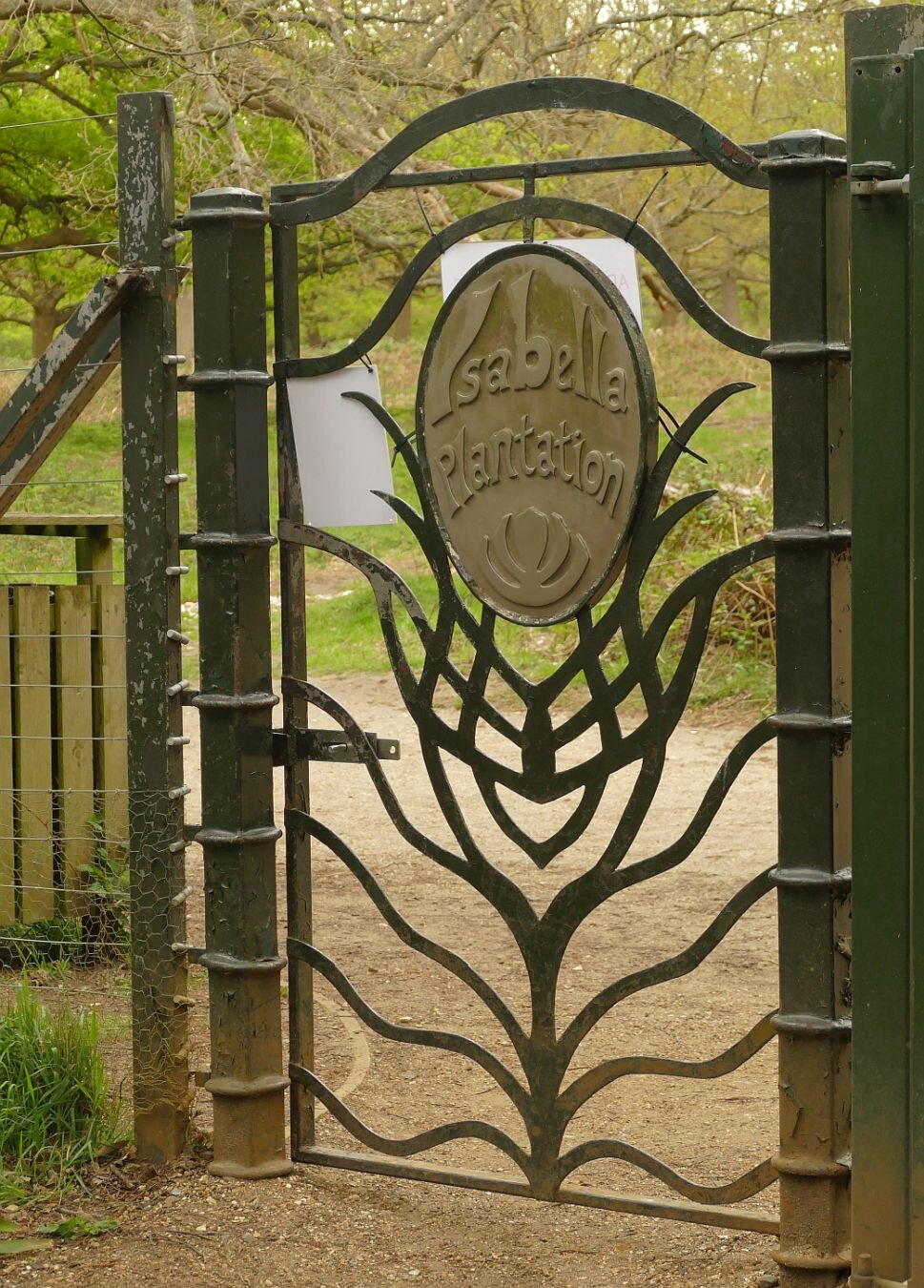Isabella Slade
There are times when only a walk in the Park will do.
And there are times when only a Royal Park will cut the mustard.
An ebbing lockdown is just one of those times and Richmond Park is just one of those open spaces. We started early, took our dog – no, no, wrong poem. We started early to find a parking space; already that adventurous idyll is fading, but at least our companion of choice arrived by bicycle.
Dodging speeding cyclists as we crossed Queens Road, we stepped out across the deer strewn grassland, under trees high-pruned to the exact stretch of a red deer’s neck, and skirted massive chunks of felled or fallen timber, which provide sculptural, dead wood habitats for what we hoped was a spectacularly diverse array of invertebrates. The cynic in me wondered if anybody had ever complained about the dead wood ‘scatter’, on the basis of it making the Park look untidy.
After an hour in a car, it was revitalising to re-orientate ourselves in parkland which extends over 2,500 acres (I checked this on the website and, yes, they do measure this enormous, 800 year old Royal Park in old money), located within 12 miles of St Paul’s Cathedral. Or, if you prefer, over 1,000 hectares of parkland within 20 km of the City of London. https://www.royalparks.org.uk/parks/richmond-park/
It’s the place to be in a pandemic. Charles I removed his court to Richmond Palace in 1625, to escape the plague, and enjoyed it so much that he enclosed the Park in 1637. As ever with enclosures, this move proved unpopular with the locals but pedestrians were allowed a right of access. It was this right, as well as our legs, which we were exercising during the current pandemic.
It’s still a heavily protected landscape although these days by legislation rather than the walls. It’s a National Nature Reserve, London’s largest Site of Special Scientific Interest and a Special Area of Conservation. This last is a European designation, which has been transferred across the Brexit enclosures to operate in England and Wales. But hey, this is supposed to be a rejuvenating walk in the park, not a history and politics lesson.
Today’s destination is the Isabella Plantation, a more recent ‘enclosure’ which, at this time of year, promises colourful therapy to senses jaded by lockdown and ‘stay local’ limitations. I suppose the additional plastic signs, on the back of the gate, are an inevitable part of Covid ‘road map’ life.
As a part of a Royal Park, I was imagining the eponymous Isabella to have royal connections, if only in the sense of a Nell Gwyn or a Lily Langtry. In fact, Isabella Slade comes from humble and geographical origins. At best, suggests the website, Isabella might have been a staff member’s wife or daughter, but the author obviously favours the corruption theory: ‘it is more likely to be a corruption of the word isabel, which was used as far back as the 15th century to mean dingy or greyish yellow - the colour of the soil in this part of the park‘. This is a definition new to Terroir but corroborated by Wikipedia (https://en.wikipedia.org/wiki/Isabelline_(colour)). And Slade? Apparently this part of the Park was known as ‘The Sleyt’ in the 17th century, a name used for ‘boggy ground or an open space between woods or banks. By 1771, it is shown on maps as Isabella Slade.’
By 1831, 17 ha (42 acres) had been fenced off, planted for timber with oak, beech and sweet chestnut, and renamed Isabella Plantation. A second makeover started in the 1950s, to create a damp, woodland garden. Large quantities of Rhododendron ponticum (that weedy thug of many British landscapes) were removed, and replaced with azaleas, more interesting and less invasive rhododendrons and a good range of other exotic trees and shrubs.
There are lots of interesting things to say about Isabella. She/it contains the National Collection of Kurume Azaleas, brought back from Japan by plant hunter Ernest Henry ‘Chinese’ Wilson in the 1920s. We also have to note that E H Wilson was born in Chipping Camden, on the other side of the hill to Ilmington, the subject of Blog 22, on March 25th.
Biodiversity is taken pretty seriously, it seems, and plantings of native flowering and berry bearing trees and shrubs grow alongside the exotic vegetation, to enhance the habitat for birds, bats and insects.
A Heritage Lottery Fund/SITA funded access project seems to have done wonders for paths, vegetation management and the wetland environment. All these aspects were delivered to a very high standard on the day of our visit. Even the rain held off.
Apparently there are some very eco-friendly toilets, but Terroir is not in a position to comment on these.
The plantation is regularly infested with Oak Processionary Moth (OPM), the hairs of which, IF TOUCHED, can trigger skin rashes and respiratory problems. Control is carried out by spraying with insecticide (the Plantation may be closed during spraying operations). We could spend quite a lot of time discussing the pros and cons of OPM control.
But
This blog is meant to be about spiritual refreshment, colour therapy, relaxation, an antidote to lockdown, tranquillity, a shared experience with nature and a friend.
Let’s go for walk.
The colour therapy:
The wetland - those skunk cabbages are just lapping it up:
And the Japanese Kurume Azaleas:
Feeling better?


















